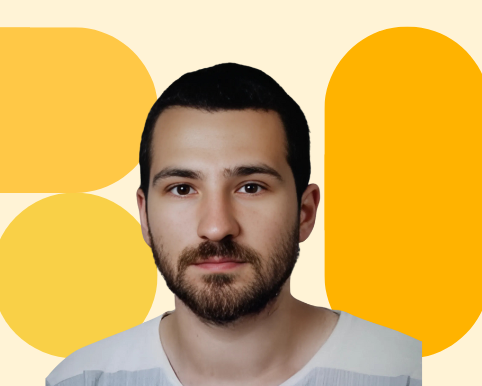What does a Service Designer do?
By Jade Richardson onIn this series, we explore some vital roles in the life sciences, and how their work impacts patients and families. In this blog, we explore the role of service designers, who plan and organise services to be as effective and easy to use as possible. Below, Jade Richardson shares her experience working as a Service Designer here at Genomics England.
My work as a service designer
I am one of 6 Service Designers here at Genomics England, and our role is to design the end-to-end journey of the service we work in. This means I spend most of my time collaborating with colleagues across professions, to figure out all the steps a user of our service might complete to achieve a specific goal.
My work is always changing, depending on who I’m working with. I team up with design researchers, product designers, and content designers to ensure that our work revolves around the needs of our users first and foremost. I rely a lot on my design research colleagues to help me better understand what assumptions we’ve made about users, what their real needs are, and what the impact of our solution will be.
You can often find me mapping out user journeys on post it notes, or creating detailed visualisations of a current or future service - usually with a lot of question marks where I’m missing information and know we need to learn more!
Service design is 10% design... 90% creating the conditions for design to happen.
Lou Downe
Former Design Director and author of Good Services

How did I end up in the space?
Unlike some Service Designers, I’ve had a very linear career path! I studied service design at the Glasgow School of Art in Scotland and did the Master of European Design course over 5 years, where the motto was “the best design school in Europe isn’t one school”. This meant I got to experience different approaches to design by going on exchange for 2 years, one year in Milan and one year in Paris.
During my last year of university, I started exploring the impact that design could have on healthcare, specifically cancer care, and I’ve loved working in healthcare ever since.
I then went on to work at a cancer charity called Macmillan in their Innovation team, where I looked at how the charity could further support people living with and affected by cancer based on their unmet needs. I learnt so much about the UK’s healthcare system through interviews, and got to travel to across the UK to meet people living with cancer and hear about what support they’re missing.
Right before joining Genomics England, I worked in the Ministry of Justice’s User Centred Policy Design team, looking at testing the impact future policies might have on foreign national offenders. This was very unfamiliar, away from healthcare, but I loved collaborating with policy makers to design policies in a user-centred way, testing them with the people most likely to be impacted by them.
The importance of service design
“Good services are designed.” Lou Downe
Good services must be designed intentionally, they don’t happen by accident. If they’re not, then ultimately, it’s users who feel the pain. I’d recommend reading the 15 Principles of Good Services to understand more about what makes a service ‘great’.
As a result, my work as a Service Designer tends to be behind the scenes. The reality is that if I’ve done my job well, patients and participants might not even notice it, as “it just works”, no confusion, no challenges. Good services are the ones that enable users to do what they set out to do, with as little friction as possible.
I don’t focus solely on patients and participants, but also the many individuals in the Genomic Medicine Service, like Clinical Scientists, whose experiences also need to be designed to create a cohesive and seamless service.
Many designers have used the following metaphor to explain the wide scope of service design and how we work across people, products, and systems to design:
Front of house & Front-stage: what users see
Back-stage & Behind the scenes: what ‘actors’ of a service see and where they act
Service Designers work with teams across Genomics England to make sure everything runs smoothly for everyone involved. We also design what happens if something goes wrong (metaphorical fire alarm goes off, sound doesn’t work) to anticipate problems and design support for the users and staff needed to deliver an experience.

Figure 1: Four side-by-side photos showing parts of a theatre: a ticket booth (front of house), a stage viewed from the audience (front-stage), technical equipment backstage (back-stage), and crew working on set pieces (behind the scenes)
The passion behind it all
I have now been at genomics England for 4 years, and no month feels the same as the last. I am lucky to be in a role that allows me to move around the organisation, collaborating with new colleagues on new solutions.
I learn a lot from my colleagues. Their ideas and ways of working help us make better decisions and design better solutions for users. A great example would be bringing the Generation Study to life, from posters in waiting rooms to training midwives. You can learn more about service design in the Generation in a previous podcast, where my colleague and fellow Service Designer Jenna shares how recruitment for the study was designed purposefully, considering when parents might be flooded with information, thinking about non-English speakers, and how to ensure the blood sample is collected.
Genomics is still an emerging field, and there’s so much opportunity for us to ensure we design new services with intention and alongside users, as they are who it all comes down to in the end.
And finally...
If you want to read more about the other vital roles at Genomics England, check out our careers blog series.
You can also learn more about the Generation Study in our previous explainer blog.


